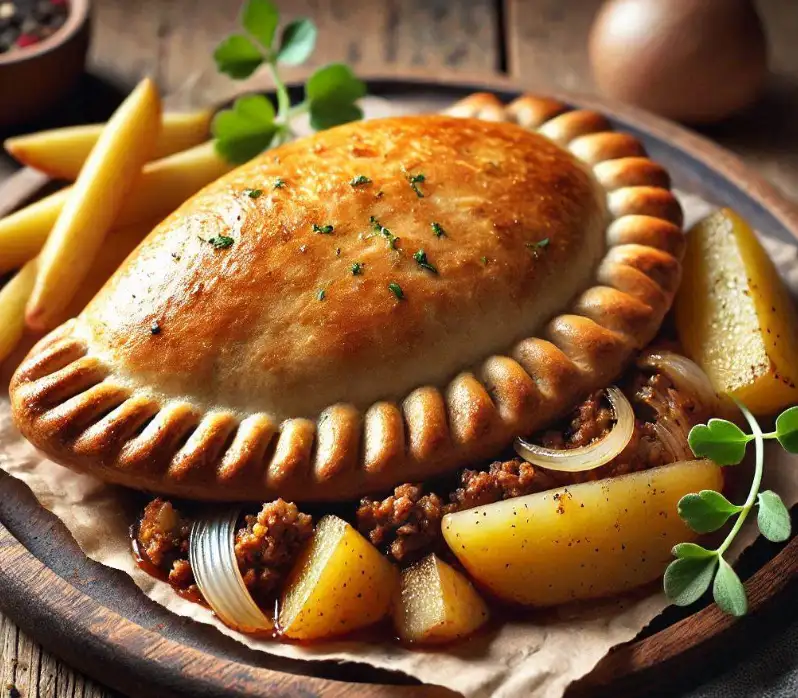The Cornish pasty, a culinary gem from Cornwall, England, is a beloved dish steeped in history, tradition, and flavor.
Known for its distinctive crimped edge and rich filling, the Cornish pasty is more than just food—it’s a symbol of Cornish heritage.
Let’s explore what makes the Cornish pasty authentic and why it holds a special place in hearts and kitchens around the world.
What is a Cornish Pasty?
A true Cornish pasty is a hand-held, turnover-shaped pastry made with buttery shortcrust dough.
It’s filled with a simple yet hearty mix of beef, potatoes, onions, and swede (also known as rutabaga), seasoned with salt and pepper.
The edges are crimped to create the iconic Cornish-style seal.
In 2011, the Cornish pasty earned Protected Geographical Indication (PGI) status, meaning only pasties made in Cornwall using specific ingredients and methods can bear the name.
This protection underscores its cultural importance, akin to Champagne in France.
Learn more about the origins of Cornwall’s iconic dish by exploring its rich history here.
The History Behind the Crimp
Dating back to the 13th century, the pasty gained prominence during the tin-mining boom of the 17th and 18th centuries.
Miners needed a meal that was portable, hearty, and easy to eat in the dusty, arsenic-laden conditions underground.
The thick crimped edge served as a handle for miners, allowing them to hold the pasty without contaminating the filling.
Often discarded after eating, this clever design prioritized safety and hygiene.
Some pasties even featured initials stamped into the dough to identify their owner or a dual filling—savory on one side, sweet on the other—to serve as both meal and dessert.
What Sets an Authentic Cornish Pasty Apart?
- Ingredients: Authentic pasties contain only raw beef, potato, swede, and onion. Variations or additional ingredients disqualify them as true Cornish pasties.
- Preparation: Ingredients are placed raw into the pastry, ensuring they cook together for maximum flavor.
- Location: Only pasties made in Cornwall can legally carry the Cornish name.
- Crimping Style: The crimp must be done by hand along the side, not the top, giving it a unique appearance.
How to Enjoy a Cornish Pasty
A Cornish pasty is versatile—perfect for picnics, lunchboxes, or cozy dinners.
Traditionalists enjoy them plain, while others pair them with tomato ketchup or a tangy pickle.
For the ultimate experience, enjoy one while strolling along Cornwall’s breathtaking coastlines.
Transform your kitchen into a Cornish bakery with these handy tools and ingredients:
- Pastry Cutter Set: Ensure a uniform shape for every pasty.
- Heavy-Duty Baking Sheet: Ideal for achieving that golden crust.
Why the Cornish Pasty Matters
More than just a meal, the Cornish pasty represents resilience, ingenuity, and family traditions passed down through generations.
From its historic ties to mining communities to its modern-day status as Cornwall’s national dish, it embodies the soul of Cornwall.
Ready to taste a piece of history? Try making an authentic Cornish pasty at home or explore Cornwall to experience this iconic dish where it all began.
Embrace the flavors and stories of Cornwall with every bite of this timeless delicacy.

